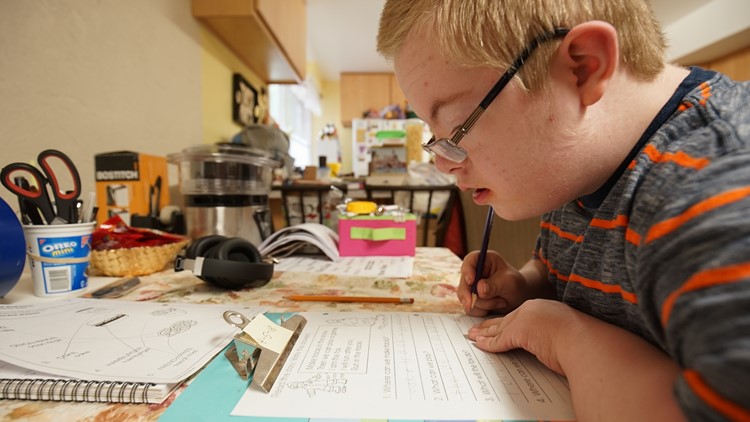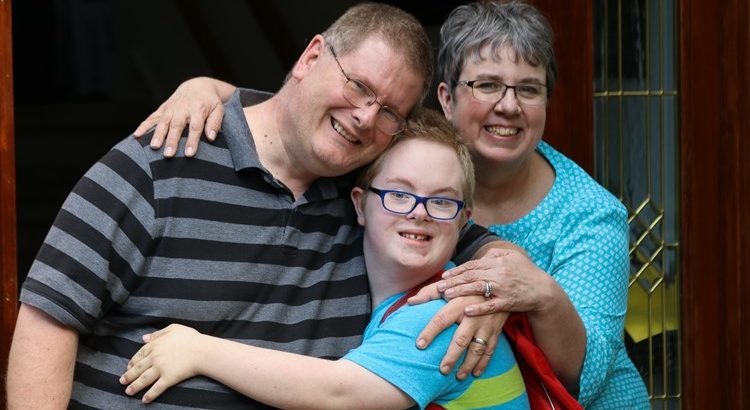By: Taylor Mirfendereski, Susannah Frame.
— It wasn’t Sam Clayton’s xylophone performance of “Twinkle Twinkle Little Star” that brought his parents to tears recently.
It was the roaring applause and standing ovation from Sam’s classmates that followed his performance as the opening act at his high school’s band concert in May.
“I got really really choked up and thought, ‘This is amazing,’” Sam’s mother, Sandy Clayton, said. “This, in such a huge way, was a recognition of Sam.”
Sam, 14, just finished his freshman year at Decatur High School in Federal Way. He was born with Down syndrome.
Until Sam’s performance on the school stage, Sandy and Rob Clayton had never before seen so many other kids recognize their son. The school year prior, at a middle school dance, they watched Sam’s classmates ignore him while he spent 45 minutes in the school gymnasium dancing alone.
«Not one child came and interacted with him. No one came and said, ‘Hi Sam,'» Sandy Clayton said. «He experiences every emotion every other kid feels. He knew he was alone.»
For this family, the band concert applause was yet another milestone in a year full of academic and social progress for Sam. It symbolized the incredible change that can happen to children with disabilities when school administrators make one simple adjustment to their education: inclusion with students who don’t have disabilities.
“It still boggles my mind that no one came by and said hello to him [at the dance], and now, he just walks down the hall — it’s not even a special occasion— and the kids are saying hi to him,” Sandy Clayton said.
This school year, Sam’s freshman year of high school, was the first time in three years that Federal Way school administrators allowed him inside general education classrooms, learning alongside non-disabled peers for nearly 40 percent of the day. At Taf @ Saghalie Middle School, Sam spent every day in a segregated classroom with other students with disabilities, including lunch.
“[The inclusion is] changing his life significantly,” his dad, Robert Clayton, said.
The fiery pitcher known as “Hutch” would have turned 100 this summer. Learn how a brother’s promise to end cancer inspired lifesaving research right here in Seattle.
Sam, who previously struggled to meet his academic goals, was the subject of the second investigation in KING 5’s “Back of the Class” series in May 2018. The investigation found that Washington schools exclude students with disabilities from general education settings more often than schools in nearly every other state in the country.

That’s not supposed to happen under state and federal law. Public schools in the United States are required to provide specialized educational services to all children with a disability recognized under the Individuals with Disabilities Education Act (IDEA).
That law guarantees that the more than 150,000 special education students in Washington have the right to go to school in the “least restrictive environment.” It means they should get the opportunity — to the maximum extent appropriate — to learn in a general education setting around children who are not disabled, even if they can’t keep up academically or if schools have to provide extra support.
«I see all too often that kids are removed from the regular classroom unnecessarily when they are capable of learning with the right support,” said Kathy George, a Seattle-based attorney and a special education expert.
Just over half of Washington’s 6 to 21-year-olds with disabilities spend 80 percent or more of their day in general education classes. Only seven states have a lower percentage of special education students in regular classes, according to an analysis of the U.S. Department of Education’s 39th Annual IDEA report to Congress, published in 2017.
Five percent of Washington’s students with intellectual disabilities spend the majority of their day in regular classrooms. Only two states in the country — Nevada and Illinois — have worse inclusion rates in that category, according to the same report.






 Users Today : 49
Users Today : 49 Total Users : 35403242
Total Users : 35403242 Views Today : 70
Views Today : 70 Total views : 3332509
Total views : 3332509